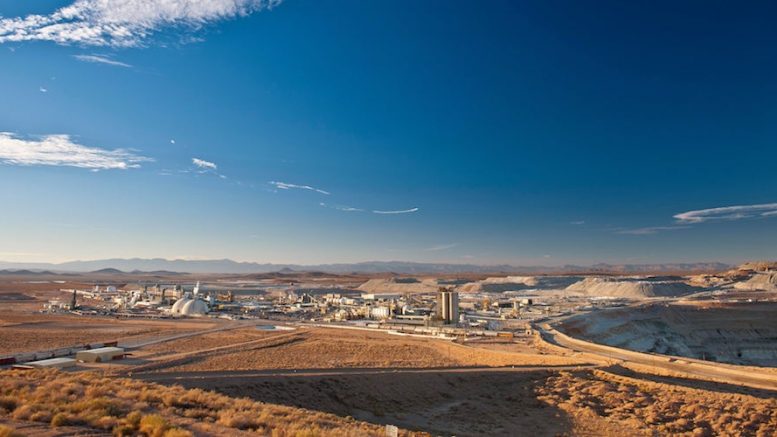Rio Tinto (NYSE: RIO; LSE: RIO; ASX: RIO) has kicked off lithium production from waste rock at a plant located at a borates mine it controls in the state of California.
The demonstration facility is the next step in scaling up a breakthrough lithium production process developed at the Boron mine. The method allows Rio Tinto to recover the critical mineral and extract additional value out of waste piles from over 90 years of mining at the operation.
An initial small-scale trial in 2019 successfully proved the process of roasting and leaching waste rock to recover high grades of the metal, vital in the production of batteries that power electric vehicles (EVs) and most high-tech electronics.
Rio Tinto’s discovery of lithium at Boron was a fluke. The miner was actually testing Boron’s tailings to see whether the presence of gold was significant and found instead traces of lithium at a concentration higher than domestic projects under development.
“We were looking for gold … but we found something better than gold: battery-grade lithium – and the potential to produce a lot of it,” Alex Macdonald, senior engineer at the plant, said on the company’s website.
Rio Tinto invested US$10 million to build the pilot plant, which will be able to produce 10 tonnes a year of lithium-carbonate. By the end of this year, and based on the trial’s results, it will decide whether or not to spend a further US$50 million in an industrial-scale plant with annual capacity of 5,000 tonnes a year — enough for around 15,000 Tesla Model S batteries.
The projected production would be roughly the same as the capacity of Albemarle’s (NYSE: ALB) Silver Peak mine in Nevada, which is currently the only lithium-carbonate producing asset in the country, according to the US Geological Survey.
Until now, the global miner’s presence in the lithium space has been mostly limited to its 100%-owned lithium and borates mineral project in Jadar, Serbia. A feasibility study for the proposed mine is expected to be completed by the end of 2021, Rio Tinto said.
The company has produced borates — a group of minerals used in soaps, cosmetics and other consumer goods — for nearly a century in the Mojave Desert, about 195 km north of Los Angeles.
In March, the world’s second-largest miner anounced an agreement with renewable energy firm Heliogen to explore the deployment of solar technology at the mine.


Be the first to comment on "Rio Tinto kicks off lithium production in the US"